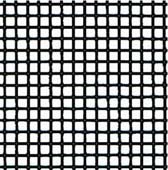

A data fabric and a data mesh both provide an architecture to access data across multiple technologies and platforms, but a data fabric is technology-centric, while a data mesh focuses on organizational change. You may now be thinking how does a data fabric compare to a data mesh? (If you are not familiar with a data mesh, check out my blog Data Mesh defined). At EY, my new place of employment, we are building a data fabric that will be the subject of a future blog post.

Ideally the building blocks could be use by other solutions outside of the data fabric. These building blocks would be used to build platforms or “products” such as a client data integration platform, data hub, governance framework, and a global semantic layer, giving you centralized governance and standardization. A data fabric includes building blocks such as data pipeline, data access, data lake, data store, data policy, ingestion framework, and data visualization.

If you are thinking this sounds a lot like a modern data warehouse that I posted a video on recently at Modern Data Warehouse explained, well, I would argue it basically is the same thing except a data fabric expands on that architecture. The ultimate goal of data fabric is to use all your data to gain better insights into your company and make better business decisions. It enables accessing, ingesting, integrating, and sharing data in a environment where the data can be batched or streamed and be in the cloud or on-prem. In short, a data fabric is a single environment consisting of a unified architecture with services and technologies running on it that architecture that helps a company manage their data. Another buzzword that you may have been hearing a lot about lately is Data Fabric.


 0 kommentar(er)
0 kommentar(er)
